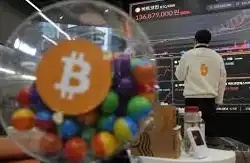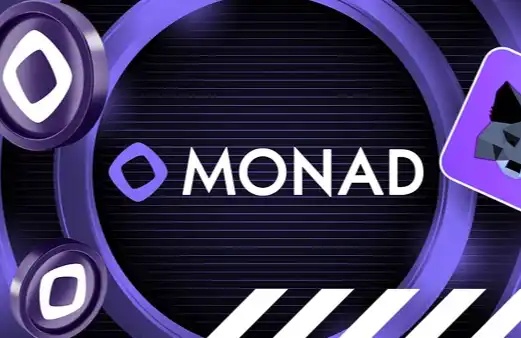Could Blur's airdrop be a 'bull bear watershed' for the NFT market?
Article:0xLaughing, rhythm BlockBeats
introduction
Since the launch of Blur on the NFT marketplace on October 20 last year, users have been attracted to the platform for its silky experience and low transaction friction, with a three-round airdrop campaign that encourages users to place orders and bid to engage and retain users. While OpenSea introduced a "Mandatory Royalty tool" to force NFT projects and trading platforms to take sides, Blur circumvent this "Maginot line" through feature iteration, and Blur gradually gained a firm footing in the red Sea of NFT trading platforms.
NFT Marketplace Blur's native Token $BLUR will officially launch on February 14th, in a highly anticipated airdrop spanning nearly four months. The market for $BLUR discussion is endless: some people think that good landing is bad, NFT market is about to fall; Others argue that the wealth effect will radiate through all sectors of the NFT market, creating hype and pushing the NFT market into a new phase.
Since Yuga Labs launched the game at the end of December last year, NFT market recovery is in a "small bull market" cycle, that Blur airdrop landing node will be a "bull bear watershed"? Let's find out.
The two sides, bull and bear, debated fiercely
The downside: The end of the "Bid to Airdrop" campaign will cause market liquidity to plunge and the downside could trigger a chain reaction

NFT exchange market share
From Dune AnalyticsdataAs you can see, Blur had some ups and downs with OpenSea before the launch of Blur's third round of "Bid to Airdrop", but since the launch of the third round, Blur has gradually tipped the scales in its favour: Blur accounted for 74% of the total NFT market at one point, though it has since fallen back a bit, but is on par with OpenSea.
The trick is that this "Bid to Airdrop" campaign helps provide greater liquidity for NFT transactions on Blur's platform.
In the third round, Blur will reward users with points based on the 24-hour transaction volume of an NFT series. The bid closest to the floor price (the one most likely to be accepted by the offer) will be judged by the system to receive the majority of points, and the amount of points gained will be proportional to the bidding time.
At the same time, after users deposit their ETH for bidding into Blur platform, they can bid repeatedly across the NFT series, and the points can be accumulated repeatedly.
As we all know, due to the indivisible and high unit price of NFT (the unit price of blue chip NFT starts at every 10E), small quantity (the total amount is less than 10k is the most common), rarity difference (the holder may think that their NFT is more different subjtively), and high transaction slip point (platform commission + royalty),The floor price often does not match the offer price, and the transaction depth is insufficient, which is the main reason for the inefficiency of matching transactions in the NFT market.
This creates a bad situation:
• & have spentTraders who want to sell NFT quickly to close a position at a fair value often suffer large slip-point losses
• & have spentCapital inefficiency
Blur's approach to the third round of airdrops, however, worked (leaving aside the rights and wrongs of its royalty strategy) :
• & have spentUsers can use their money more efficiently to trade/masturbate;
• & have spentSuch bidding rules encourage buyers and sellers to compete among themselves.The bidder/buyer will try their best to close the offer price to the floor price/fair value of this NFT series in order to obtain the air drop, so that the seller can sell at a better price and obtain better exit liquidity, thus achieving the purpose of improving the efficiency of the transaction matching between the buyer and the seller. The transaction depth, liquidity, matchmaking efficiency and other aspects of Blur platform have been improved.
But cause and effect follow each other,When Blur airdrop activity ends, unprofitable may cause a large number of bidding orders to be cancelled, and its advantages in trading depth, liquidity, matchmaking efficiency and other aspects will be sharply weakened in a short period of time, thus losing the cushion against the large fluctuations of the NFT market.

The amount of lock-in in Blur's Bid pool is already falling
In fact, the money in Blur's Bid pool has already started to withdraw at the moment: according toDeFiLlama dataIt shows that the amount of locked warehouse in Blur platform was 29.27k ETH on February 9, and it has dropped to 23.98k ETH today, a decline of 18.1% in four days.
Predictably, these pools of money will continue to flow out if further official Blur activity motivates users to Bid. If things get worse and the NFT market falls, there will be a chain reaction:
• After the user deposits his ETH for bidding into Blur platform in order to obtain airdrop, he may participate in multiple NFT series repeat bidding with the same amount of money. When one of the NFT series has been bid down, the bidding order will be completed, which will cause the money to disappear in the bidding of other NFT series. It also means a loss of trading depth and liquidity;
• Some of the NFT lending platforms currently maintain high collateral ratios, making liquidation more likely to be triggered when the NFT market falls. When combined with the sudden reduction in Blur market liquidity, runs and bad debts may be more likely to occur.
Advancers: The wealth effect of the $BLUR airdrop will spill over into various sectors of the NFT market, benefiting the entire market
The logic of the upswing is simpler. As the only NFT platform that can threaten OpenSea's status, Blur has a high valuation and high expectations.
For the users who continue to participate in Blur airdrop activities, some users will choose to drop the bag after receiving the $BLUR airdrop. Investors who are not participating in the airdrop and want to invest in the future of Blur as a head market will naturally buy $BLUR, and there may be many non-NFT investors involved. The market had high expectations for $BLUR, and the wealth effect followed when it changed hands.
In response to this "creation of wealth out of thin air", money and enthusiasm will spill over into various sectors of the NFT market. Investors will use the profits to buy NFT assets or NFTFi-related tokens, thus benefiting the whole market.
In fact, the prices of NFT-related tokens such as x2y2, LooksRare, BendDAO, and JPEG'd have increased significantly in the last one to two months.
prospect
Since Blur has not yet released the $BLUR token economics model, we do not know the details of initial flow and protocol value capture, and we do not know the percentage of users who are attracted to airdrop and simply by the low rates. The Blur platform and its $BLUR token cannot be accurately valued by market share alone.
People expect $Blur airdrop to become the new NFT bull market engine, see if Blur can replace OpenSea as the NFT market leader, and look for the "bull bear watershed" opportunity.
At the same time, SEC has been taking frequent actions against the crypto circle recently, and the launch of $BLUR airdrop coincides with the release of CPI on the same day. As this data is crucial to the trend of the US stock market and the crypto market in the future, the market may experience sharp fluctuations. But don't be afraid. After all, "the bigger the waves, the more expensive the fish."
reference
[1]Is the current NFT market an over-leveraged "false bull market"?
[2]With Blur's airdrop on the horizon, what other NFT concept tokens are worth watching?
Welcome to join the official BlockBeats community:
Telegram Subscription Group: https://t.me/theblockbeats
Telegram Discussion Group: https://t.me/BlockBeats_App
Official Twitter Account: https://twitter.com/BlockBeatsAsia


 Forum
Forum Finance
Finance
 Specials
Specials
 On-chain Eco
On-chain Eco
 Entry
Entry
 Podcasts
Podcasts
 Activities
Activities
 OPRR
OPRR








